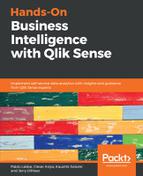The entity relationship modeling (ER modeling) technique uses the entity and relationships to create the logical data model. The ER modeling technique was developed by Peter Chen in 1976. This technique is best suited for the Online Transaction Processing (OLTP) systems.
An entity in this model refers to the any thing or object in the real world that has distinguishable characteristics. Each entity has some properties and the corresponding values of these properties. Consider, for example, Customer, Employee, Product, and so on. Each of these entities has some specific properties.
For example, the Customer entity has a name, address, contact number, city, state, and so on. These are called the properties, and each property has a value associated with it.
A relationship in this model is the relationship between the two or more entities. There are three basic types of relationship that can exist:
- One-to-one: This relation means each value from one entity has a single relation with a value from the other entity. For example, one customer is handled by one sales representative:

- One-to-many: This relation means each value from one entity has multiple relations with values from other entities. For example, one sales representative handles multiple customers:

- Many-to-many: This relation means all values from both entities have multiple relations with each other. For example, one book can have many authors and each author can have multiple books:

An example of the sample ER diagram is shown as follows:

